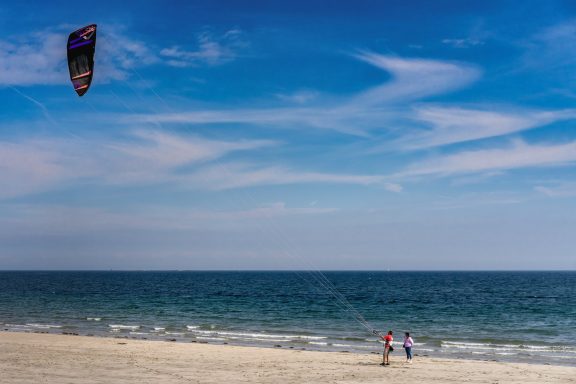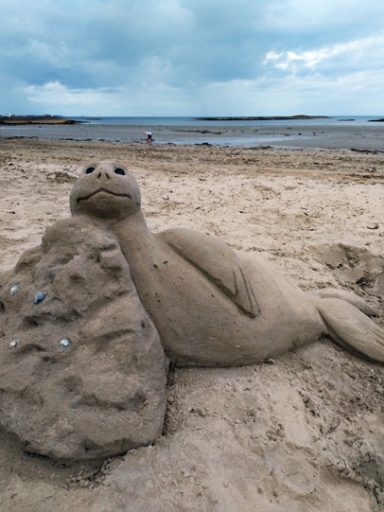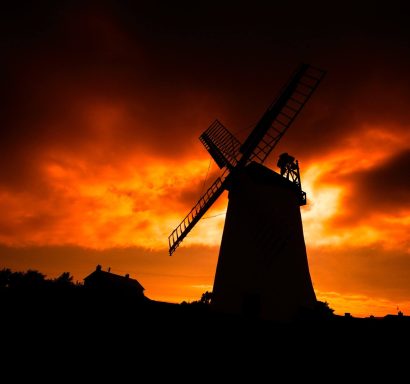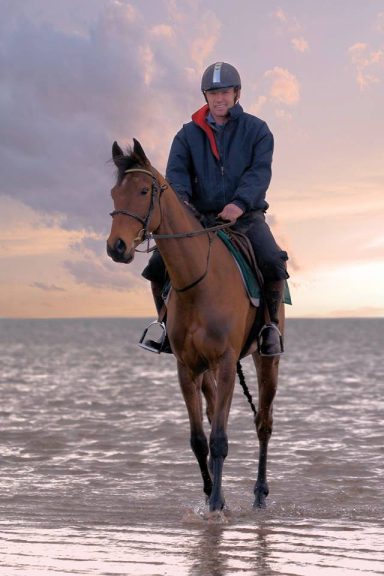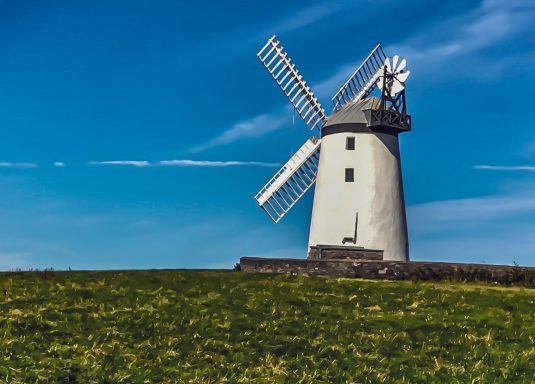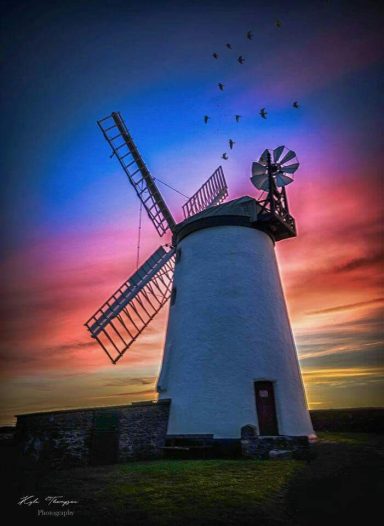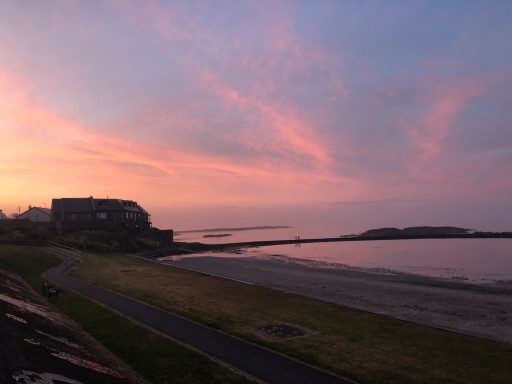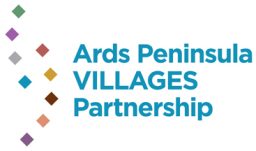Millisle
Panoramic vistas and a rich past

Stay for the day
Outstanding beaches, and much more
If you like the beach, you'll love Millisle - this little village has rightfully earned the reputation as a much-loved bucket-and-spade destination for generations of happy families.
The beach is extensive, affording the opportunity to enjoy long walks along the soft sandy shoreline. The shore is popular with wind-surfers and kite-surfers, and is a great place to exercise your dog, your horse, and your children.
Building sandcastles isn't compulsory - but it should be.
The beach is serviced by a large carpark, with an excellent children's play park and a community garden.
On the north side of the village is the Millisle Lagoon Beach, ideal for swimming and paddling, whether the tide is in or out. Along with a jetty, slipways and rockpools, there is plenty of exploring to be done in and around Millisle.
And there is a good selection of shops and places to eat and drink just a short stroll from the beach.
Places worth visiting nearby
These are just a few of the interesting places waiting for you to explore in and around Millisle

Ballycopeland Windmill
A fascinating experience for all ages: explore a unique historical monument in full working condition.
Ballycopeland Windmill is the only remaining working windmill in the world with a complete and fully-functioning Hopper Roller Reefer sail system. It was built in the late 18th or early 19th century and was operational until the First World War.
Windmill Road, Millisle, County Down BT22 2DS

Ballyrolly Farm
Ballyrolly Farm outside Millisle was used to house over 300 Jewish refugee adults and children from 1938 to 1948.
In May 1939, Barney Hurwitz, Leo Scop and Maurice Solomon of the Refugee Aid Committee leased a derelict farm close to Millisle village. At any one time, up to eighty people, including children, lived and worked on The Farm, as it became known.
Ballyrolly Farm is private property, and visiting is by special arrangement only.

Safehaven Memorial Garden
Safe Haven is the name of the Holocaust Memorial Garden in the grounds of Millisle Primary School, because a safe haven is what the Millisle community provided for many Jewish refugees during the Second World War. Jewish children came to Millisle from Germany, Austria and Czechoslovakia having been rescued from Nazi persecution and extermination.
This transportation to safety in Britain and Ireland became known as the Kindertransport.
In May 1939, Barney Hurwitz, Leo Scop and Maurice Solomon of the Regugee Aid Committee leased a derelict farm close to Millisle village. Between 1938, when the first adults and children arrived and its closure in 1948, the farm was home to well over 300 people.
The welcoming hospitality of the Millisle community is not forgotten, and each Christmastime a crate of fine oranges is delivered to the primary school as a gift from the people of Israel.
The old primary school where many of the Jewish refugees attended school is now the Baptist Church, on the Main Street.

Old Templepatrick Graveyard
This is on the seaward side of the road from Donaghadee to Millisle, one mile north of Millisle. Nothing is known of the history of the site and all traces of a church have disappeared, but there was a well on the seaward side of the graveyard known as St Patrick's Well and there is a tradition that St Patrick once landed here. There is also a small "watch-house" in the centre of the graveyard. There is no local burial register but the Donaghadee Parish registers which still survive date from 1771. The graveyard is densely packed with well-preserved slate stones. Most of the inscriptions prior to 1800 were copied in Memorials of the Dead VIII, 518 and IX, 41 and 454 but only the parts referring to deaths before 1800. There are 190 of these stones . The oldest date of death recorded is 1678.

Woburn House
At the southern end of the beach is a large house. Woburn House was originally a stately home built between 1797 and 1830 by John Gilmore Dunbar, a wealthy industrialist and mill owner. The home was used as a summer residence until 1846 when it was inherited by George Orr Dunbar, twice Minister of Parliament for Belfast. George and his wife, Isabella carried out significant improvements, adding the South Wing which includes the tower. Isabella’s father, Lord Beresford, Archbishop of Armagh lived in the house for a while and built Carrowdore Church at his own expense. During the Second World War the house was used as a convalescent home for injured soldiers while the family were still in residence in another part of the estate. Due to large death duties, the family were forced to sell the house and a significant proportion of the estate to the Ministry of Finance in 1949. In 1956 the building became an open Borstal housing around 130 boys aged 16 -21. At the height of ‘The Troubles’ in the late 1970s a more secure Closed Borstal came into operation and a new Secure Young Offenders facility for boys of school age - Lisnevin - was built on the site, having a separate entrance on the Drumfad Road. The Lisnevin complex closed in the 1980’s when the new facility at Hydebank opened. In 1980 Woburn House became a Prison Officer Training Centre.
The property is now in private ownership.
Gallery
Directions
Millisle is located between Donaghadee and Ballywalter on the Irish Sea coast of the Ards Peninsula
We need your consent to load the translations
We use a third-party service to translate the website content that may collect data about your activity. Please review the details and accept the service to view the translations.

